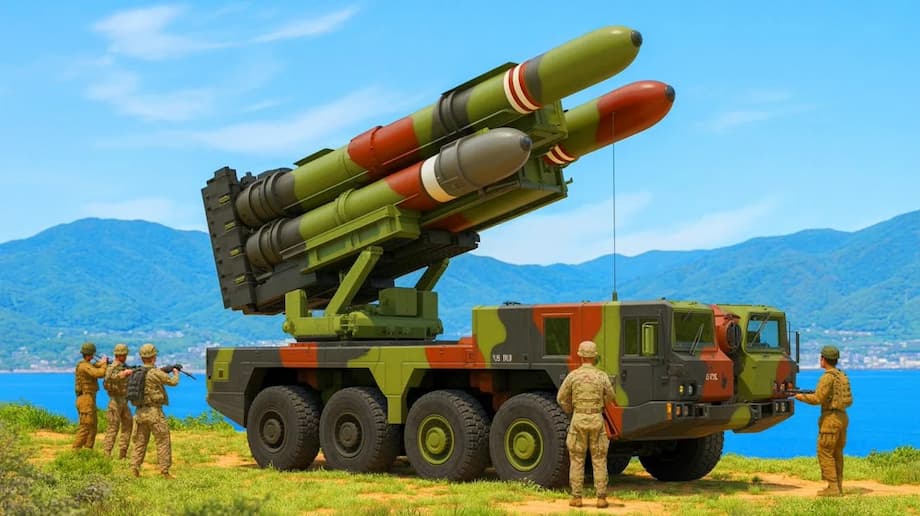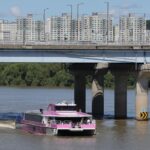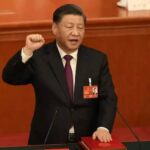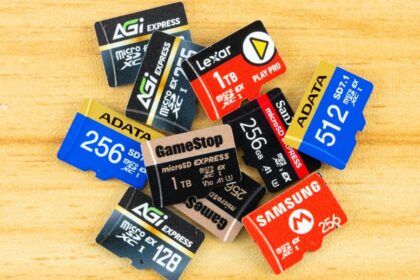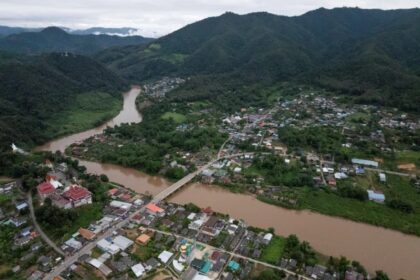Why this matters now
The United States has brought its Typhon missile system to Japan for the first time, unveiling the land based launcher during Resolute Dragon 25. The annual US Japan exercise spans much of the country and focuses on maritime defense and littoral operations. The Typhon battery was delivered to Marine Corps Air Station Iwakuni in southwestern Japan. It will not conduct live firing during the drill, but its presence alone signals a sharper and more flexible allied deterrent as tensions rise with China in the East China Sea and across the Taiwan Strait.
- Why this matters now
- What the Typhon system brings
- How it fits the US Japan alliance game plan
- Reactions from Beijing, Moscow, and Pyongyang
- Japan’s policy shift and domestic debate
- What changes on the map
- The arms control gap and a new missile age
- Sea lanes, trade, and maritime law enforcement
- What to watch next
- At a Glance
The move comes after a rapid series of Typhon deployments across the region. A launcher appeared in the Philippines in April 2024 for a major exercise and, at Manila’s request, remained in the country. In July 2025, the system deployed to Australia and fired an SM-6 missile at a maritime target during Talisman Sabre. Stationing a battery in Japan during Resolute Dragon extends the allied ability to threaten land and sea targets across much of the first island chain, complicating Chinese military planning and reassuring partners that Washington and Tokyo are prepared to respond quickly to a crisis.
Tokyo’s posture is changing as well. Japan’s 2022 National Security Strategy committed to acquiring a counterstrike capability and increasing defense spending to around 2 percent of GDP by 2027. Upgrades to domestic missiles, growing joint training with the United States, and deeper security cooperation with partners such as the Philippines reflect a broader shift in how Japan intends to deter coercion from China, manage North Korean missile activity, and monitor Russian forces operating in the Far East.
What the Typhon system brings
Typhon is a mobile battery that can fire Tomahawk land attack cruise missiles and the Standard Missile 6, better known as SM-6. A battery typically includes an operations center, four launchers, prime movers and trailers. The system is designed for quick setup, shoot, and relocation. It was developed after the end of the Intermediate Range Nuclear Forces Treaty (INF) in 2019 opened the door for the US Army to field ground launched missiles with ranges the treaty once prohibited.
How the missile mix works
Tomahawk provides long range precision strike, commonly described as roughly 1,000 miles (about 1,600 kilometers). It is effective against fixed high value targets, headquarters, and critical infrastructure. SM-6, with a shorter reach often described in the hundreds of kilometers, is highly versatile. It can contribute to air defense and ballistic missile defense at short ranges, and, in special modes, it can strike ships and certain land targets. Pairing Tomahawk and SM-6 gives a Typhon battery the ability to threaten both maritime and land targets, including ships at sea and mobile launchers that can be located and tracked by a broader network of sensors.
US Army officers say this mix is meant to impose hard choices on an adversary. Col. Wade Germann, who commands the US Army’s 3rd Multi Domain Task Force, described the effect in straightforward terms before the system’s reveal in Japan.
Employing multiple systems and different types of munitions, Typhon is able to create dilemmas for the enemy.
The launcher’s architecture is based on proven vertical launch technology adapted for mobile use on land. Each launcher can carry four missiles and be reloaded after firing. Network integration allows a battery to receive targeting data from aircraft, ships, satellites, and ground sensors, then cue missiles to engage mobile or fixed targets. In practice that means a Typhon element can set up on a coastline or on an inland road, launch, and move again before an opponent can locate and target it.
How it fits the US Japan alliance game plan
Typhon’s appearance in Japan aligns with an allied concept of distributed operations along the First Island Chain, the string of territories running from Japan through Taiwan and the Philippines. The goal is to deny an adversary freedom of action in key straits and sea lanes by dispersing mobile, survivable launchers and sensors across islands and coastal areas. The US Marine Corps is fielding a separate land based anti ship system known as NMESIS in the Ryukyu Islands. Together with Japanese missile units, these forces create overlapping threat zones against ships and coastal bases in the East China Sea.
Resolute Dragon 25 brings more than 19,000 US and Japanese personnel together to practice maritime defense, logistics, and littoral operations, including scenarios for retaking remote islands. The US Army’s Multi Domain Task Force integrates long range fires with intelligence, cyber, electronic warfare, and space capabilities. That structure allows Typhon to plug into a wider kill chain and share targeting information rapidly with Japanese forces armed with upgraded Type 12 anti ship and land attack missiles. Exercises are designed to improve interoperability, shorten decision timelines, and demonstrate that allied forces can maneuver and strike across Japan’s archipelago.
Beyond the alliance core, Typhon also fits a regional strategy. The Philippines has deepened military cooperation with the United States and is acquiring longer range missiles of its own. Japan and the Philippines recently ratified a reciprocal access agreement that facilitates joint training and deployments. Strengthening land based fires along this arc improves deterrence, and it helps protect sea lanes that carry Japanese trade through the South China Sea and into the western Pacific.
Reactions from Beijing, Moscow, and Pyongyang
China’s government criticized the Typhon reveal in Japan and argued that deploying the system undermines security in Northeast Asia. Beijing has long objected to US land based missile deployments in the Philippines and Australia. Chinese officials say the cumulative effect is a growing ring of systems aimed at the mainland and its coastal bases.
At a regular press conference, Chinese Foreign Ministry spokesperson Lin Jian framed the move as a threat to regional stability and called for withdrawal of the system from Asian countries hosting it.
The deployment of the Typhon medium range missile system in Asian countries undermines the legitimate security interests of others, fuels the risk of regional arms race and military confrontation, and poses a substantial threat to regional strategic security.
Russia has voiced similar concerns, focusing on the reach of US systems into its Far East. Russian Foreign Ministry spokesperson Maria Zakharova warned that continued expansion of such deployments near Russia would prompt a response.
If tensions continue to escalate, Russia will be forced to take necessary military technical countermeasures to safeguard its security and interests.
North Korea has repeatedly opposed the growth of US allied strike capabilities in the region. With the entire Korean Peninsula within reach of missiles fired from southwest Japan, Pyongyang is likely to cite Typhon as further justification for missile tests and for closer cooperation with China and Russia. Japanese officials, in turn, point to North Korean launches near Japan as evidence that counterstrike options and integrated missile defenses are required.
Japan’s policy shift and domestic debate
Tokyo resisted hosting US land based strike systems for years. That reluctance is giving way as the regional missile balance shifts. The 2022 National Security Strategy placed new emphasis on counterstrike capability, longer range weapons, and integrated air and missile defense. Japan is increasing defense spending and accelerating procurement of assets such as F-35 fighters, refueling aircraft, maritime patrol planes, and long range precision munitions. Plans call for spending to reach around 2 percent of GDP by 2027, a benchmark that aligns Japan more closely with NATO standards.
Public opinion remains cautious. Communities in Okinawa and across the southwest islands worry about becoming targets if missiles are stationed nearby. For that reason Japanese leaders have treated visiting US systems during exercises as a way to test operations and gauge political reaction without committing to permanent basing. Officials say the Typhon battery in Iwakuni is tied to Resolute Dragon and will depart afterward. The US has taken a similar approach in the Philippines, where a launcher initially arrived for an exercise and then stayed at Manila’s request.
Japan is also fielding its own longer range options. The Type 12 missile is being upgraded to extend its range to roughly 1,000 kilometers and to improve its survivability against jamming and interception. Paired with mobile launchers and integrated into an air and missile defense network, these systems will give Japan a more credible ability to hold targets at risk along China’s coastline and to work with US systems like Typhon and NMESIS.
What changes on the map
From positions in southwest Japan, Tomahawk missiles fired by Typhon can reach a wide set of coastal bases, ports, and logistics hubs along China’s eastern seaboard. They can also reach deep into the East China Sea, the Bashi Channel, and critical approaches to Taiwan. SM-6 provides a complementary tool for maritime strike and for higher end air defense at shorter range, useful for protecting choke points and for threatening ships that approach Japanese waters. The entire Korean Peninsula lies within reach of the system when positioned in western Japan, reinforcing deterrence against North Korean provocations.
Mobility is central to the system’s value. A Typhon battery can disperse its four launchers, hide among civilian traffic or terrain, and then rapidly set up to fire. After a salvo, crews can relocate before an adversary can detect and strike their position. That cat and mouse dynamic is a serious problem for the People’s Liberation Army, which must allocate more surveillance, missiles, and airpower to find and suppress a target that can move and hide. A single battery carries up to sixteen ready missiles across its launchers, and reloads can be staged in depth.
It is also important to keep expectations grounded. China has the largest missile force in the region, including anti ship ballistic missiles, long range cruise missiles, and hypersonic glide vehicles such as DF-17 and sea launched systems like YJ-21. Beijing’s approach is known as anti access and area denial, designed to keep US and allied forces at a distance. Typhon does not erase that challenge. It gives the alliance a way to complicate Chinese planning, to threaten targets that support long range strikes against Japan, and to impose costs in a conflict. The system’s value rests on integration with sensors, cyber capabilities, and the rest of the allied force.
The arms control gap and a new missile age
The collapse of the INF Treaty in 2019 removed a pillar of Cold War era arms control that had barred the United States and Russia from fielding land based missiles with ranges between 500 and 5,500 kilometers. Asia never had a similar ban. As strategic rivalry sharpened, countries across the Indo Pacific accelerated missile programs. China built a vast arsenal able to threaten bases and ships across the Western Pacific. The United States responded with systems like Typhon and NMESIS and with plans to forward station long range fires in Europe starting in 2026. US allies are doing the same. Japan is extending the reach of its Type 12. South Korea’s Hyunmoo series grows in range and precision. Australia is investing in domestic missile production and long range air to air and surface missiles. India has begun exporting the BrahMos to the Philippines.
This trend raises the risk of miscalculation. More accurate and faster missiles compress decision times for commanders. The temptation to preempt in a crisis grows when weapons are mobile, survivable, and hard to locate. Crisis communications, military hotlines, clear rules for exercises, and transparent notifications can reduce that risk. Without some guardrails, Northeast Asia faces a cycle of action and reaction that could make a future crisis sharper and harder to manage.
Sea lanes, trade, and maritime law enforcement
Japan’s economic lifelines run through the South China Sea and adjacent waters. Any conflict or coercive campaign that disrupts shipping would hit energy imports and trade flows. That is why Japan, the Philippines, and the United States are growing both their militaries and their maritime law enforcement. The US Coast Guard is expanding its Sentinel class cutter fleet in the western Pacific, adding capacity in Guam. Japan is launching new large coast guard vessels with flight decks for helicopters. These assets help manage day to day encounters with fishing fleets and coast guards, closing the gap between peacetime patrols and wartime missions.
Military exercises like Resolute Dragon link to legal frameworks that allow forces to train and deploy together. The new Japan Philippines defense agreement facilitates reciprocal visits and joint training. Combined with better sensors and data sharing, these steps make it harder for gray zone tactics, such as dangerous maneuvers by coast guard ships, to succeed. Japan’s experience with regular Chinese incursions near the Senkaku Islands has shaped these priorities.
What to watch next
Officials in Tokyo and Washington say the Typhon presence in Iwakuni is tied to Resolute Dragon 25 and not a permanent basing decision. Watch for signs that batteries return more often, stay longer, or begin to operate from additional locations in Japan’s southwest islands. The US Army’s Multi Domain Task Force is likely to feature more in future exercises, with tighter integration into US Forces Japan as the command shifts toward a joint warfighting posture. Germany is preparing to host long range fires and a Multi Domain Task Force from 2026, a reminder that the United States is standardizing these capabilities across theaters.
Allied capability growth will continue. Japan’s integrated air and missile defense architecture is expanding. The Marines will field more NMESIS units. The Philippines is building out coastal missile regiments. Interest in Typhon has surfaced in Europe and Asia, and Germany and the Philippines are watching the system’s performance closely.
China’s response also bears close attention. New missile tests, exercises near Japan, and counter deployments could follow, paired with diplomatic pressure on Tokyo and Manila. Russia and North Korea will continue to frame these moves as destabilizing. That makes allied crisis management, transparency, and clear signaling vital to keep deterrence strong without sliding into an escalatory spiral.
At a Glance
- The US unveiled a Typhon missile battery in Japan during Resolute Dragon 25, with no live firing planned.
- Typhon fires Tomahawk and SM-6 missiles, giving the alliance both long range land attack and maritime strike options.
- The battery at Iwakuni includes an operations center and four launchers, with four missiles per launcher and rapid reload potential.
- The deployment follows earlier appearances in the Philippines and Australia, including an SM-6 live shot during Talisman Sabre.
- China condemned the move as a threat to regional security, and Russia warned of military technical countermeasures.
- Japan’s 2022 strategy embraces counterstrike capability, higher defense spending, and longer range missiles such as an upgraded Type 12.
- US and Japanese forces are integrating Typhon with other systems, including Marine NMESIS units, across the First Island Chain.
- Missile proliferation is accelerating across the Indo Pacific as INF era limits no longer apply.
- Maritime law enforcement and coast guard expansions in Guam and Japan complement military deterrence at sea.
- Key watch items include whether Typhon returns to Japan, the pace of allied integration, and how Beijing adjusts deployments and exercises.


